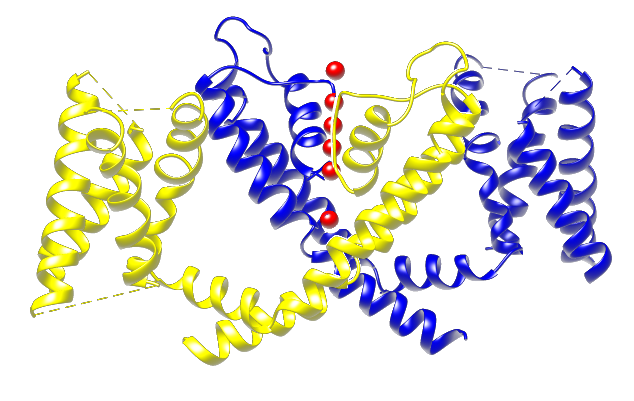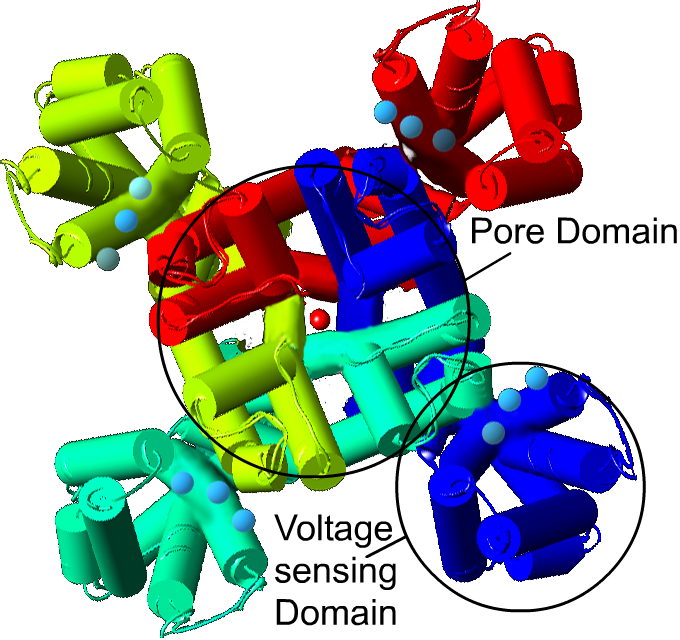SUBUNIT STRUCTURE

The channel is made up of four identical
subunits, each having six transmembrane segments, as shown in the figure. The
segments are named S1 through S6 from the amino to the carboxy ends of the polipeptide.
Segments S5 and S6 and the special P loop structure form the conduction
pore. Segments S1, S2, S3 and S4 constitute the voltage
sensor, which detects changes in membrane potential and communicates the
perturbation to the conduction pore to gate the channel
open or closed.


THREE-DIMENSIONAL STRUCTURE
 EXTRACELLULAR VIEW
EXTRACELLULAR VIEW
Each
subunit is represented in a different color. The Pore Domain
(PD) has a central conduction pore formed by Segments S5 and S6
and the pore loop of all four subunits.
The Voltage Sensor
Domains (VSD) of each subunit, are made up of segments S1, S2, S3 and S4
peripheraly located around the central pore. The voltage sensor moves in
response to changes in membrane voltage. (See
voltage
sensor)
In many Kv channels, the PD of one subunit is
facing the VSD of next subunit (swapped domain channels).
Segment S4 (the charge bearing segment) is coupled in the
intracellular region to the S5 segment by the S4-S5 linker. Each S4-S5 linker
controls the position of segment S6 of the pore. The gate of the conduction pore is formed by the all four S6
segments. The gate is open (conducting) only when all four S6 segments are in
the open position.(See
Channel Operation)
MEMBRANE VIEW (only 2 subunits)
This view shows the
pore in the center with the selectivity filter containing the K ions. The
voltage sensor are shown on the sides, where the bottom of S4 is communicating
via the S4-S5 linker with S6 and touching the S6 segment.
SIMPLIFIED VIEW (only 2 subunits)
The figure below shows the simplified view of the channel used for the
stochastic simulations of K channel operation. The S4 segments are in the active position. The S4-S5 linker is the
horizontal cylinder touching the bottom of S6 shown in the open gate
configuration. In this view the open gate is blocked by the S6 segment,
therefore in the simulation the view is from the extracellular side. (There is
also an option to see the simulation as a side view but in that case the
channel is shown as nonswapped domain case: go to Channel operation).


 EXTRACELLULAR VIEW
EXTRACELLULAR VIEW